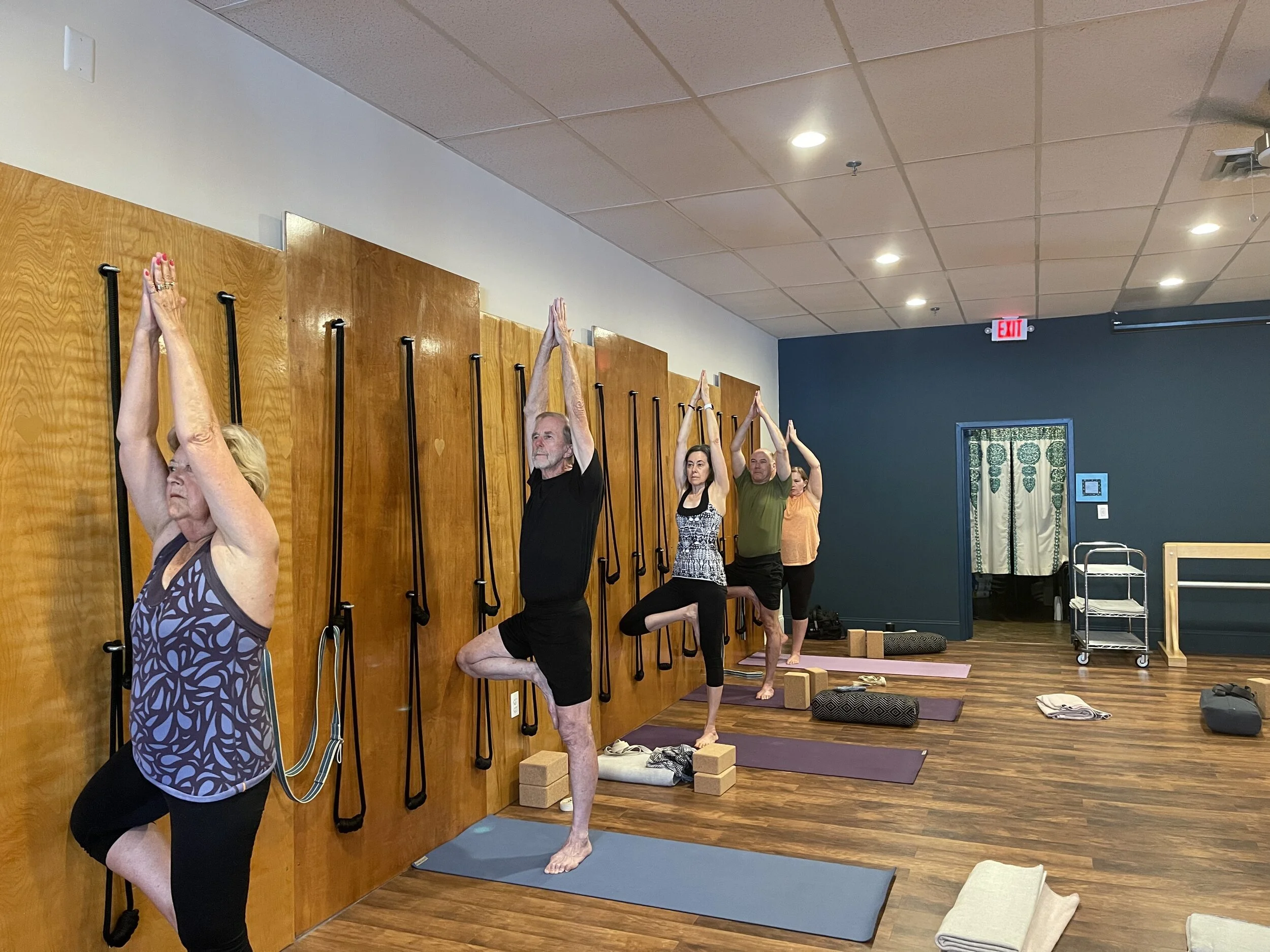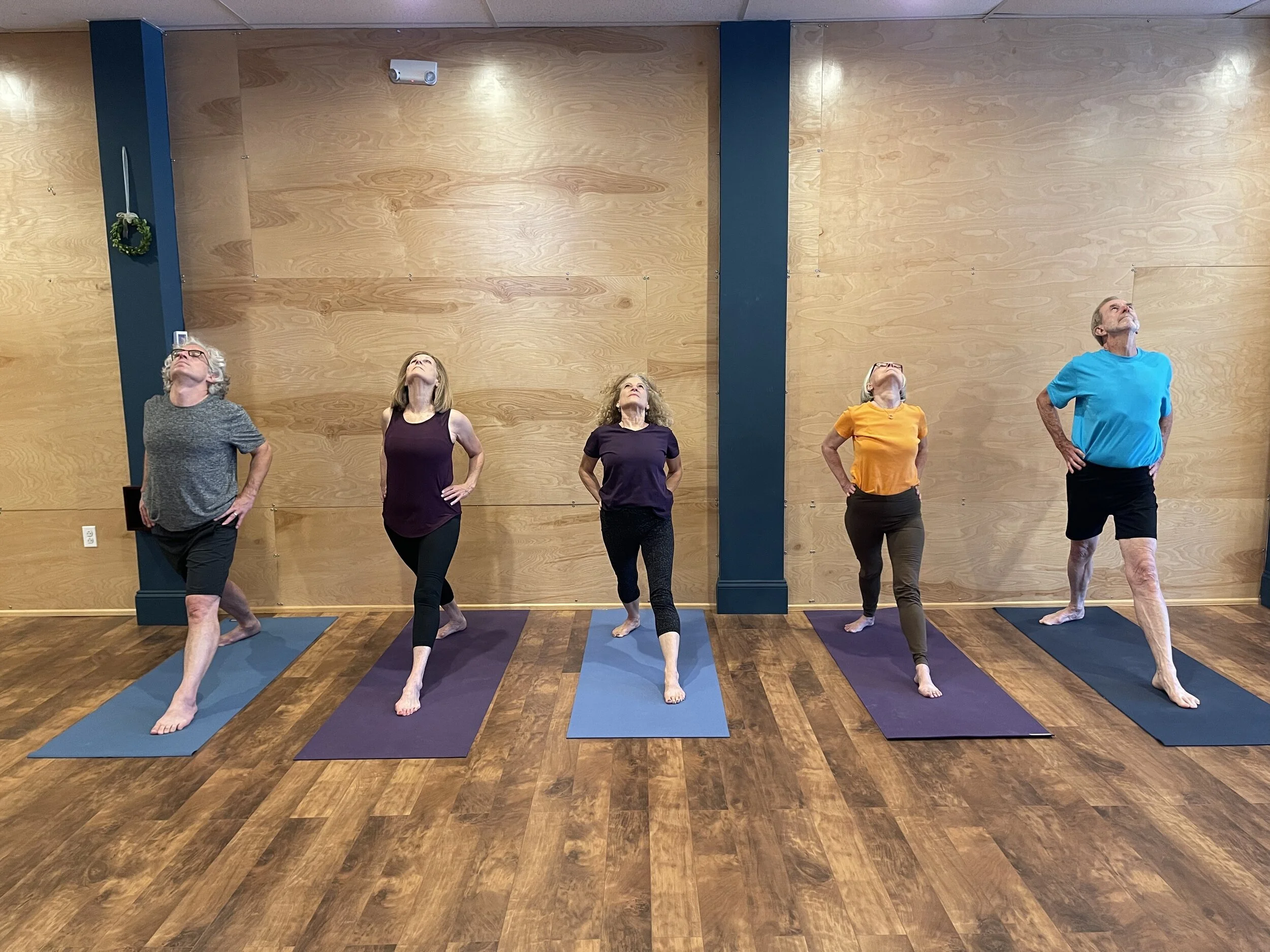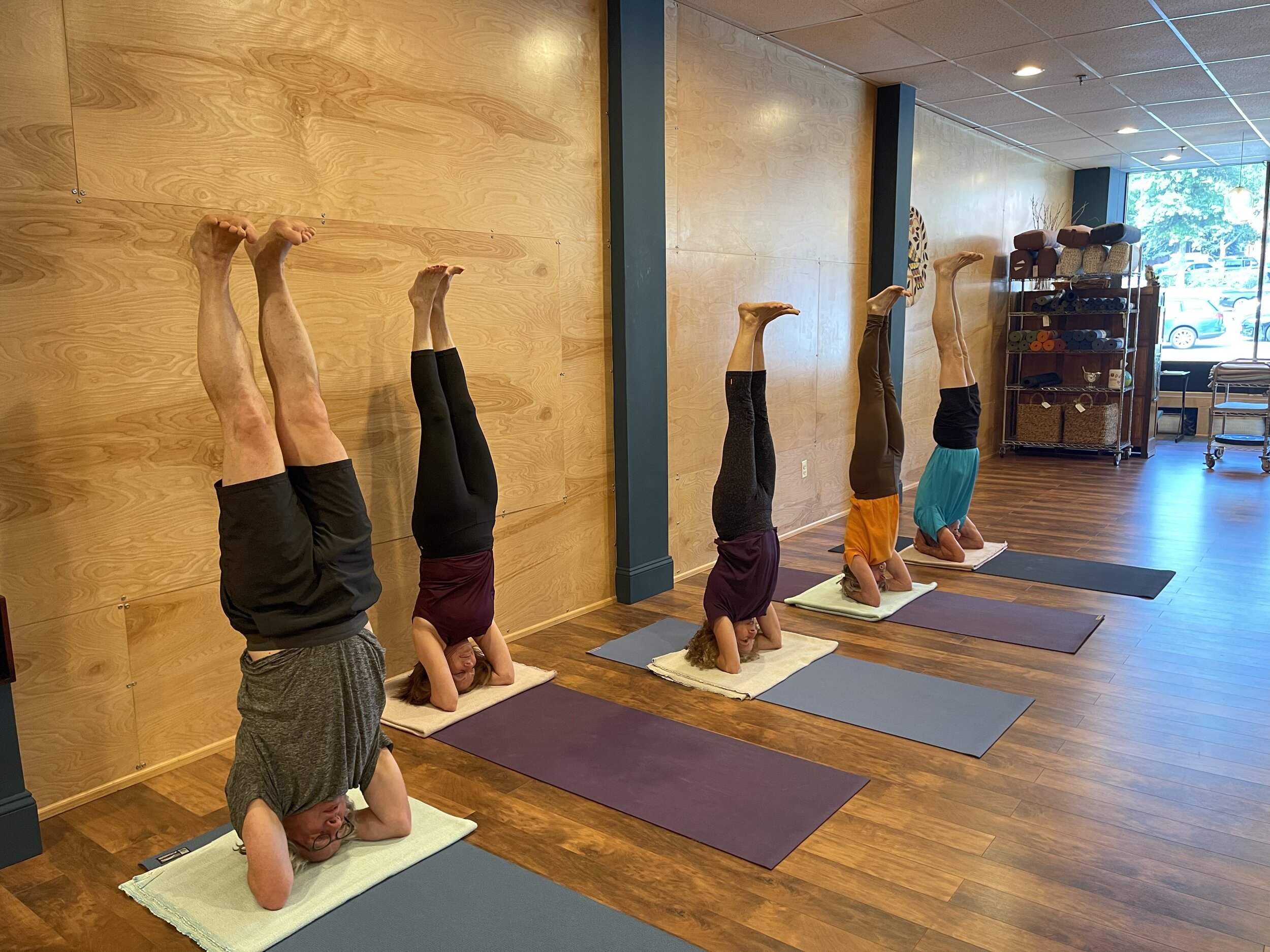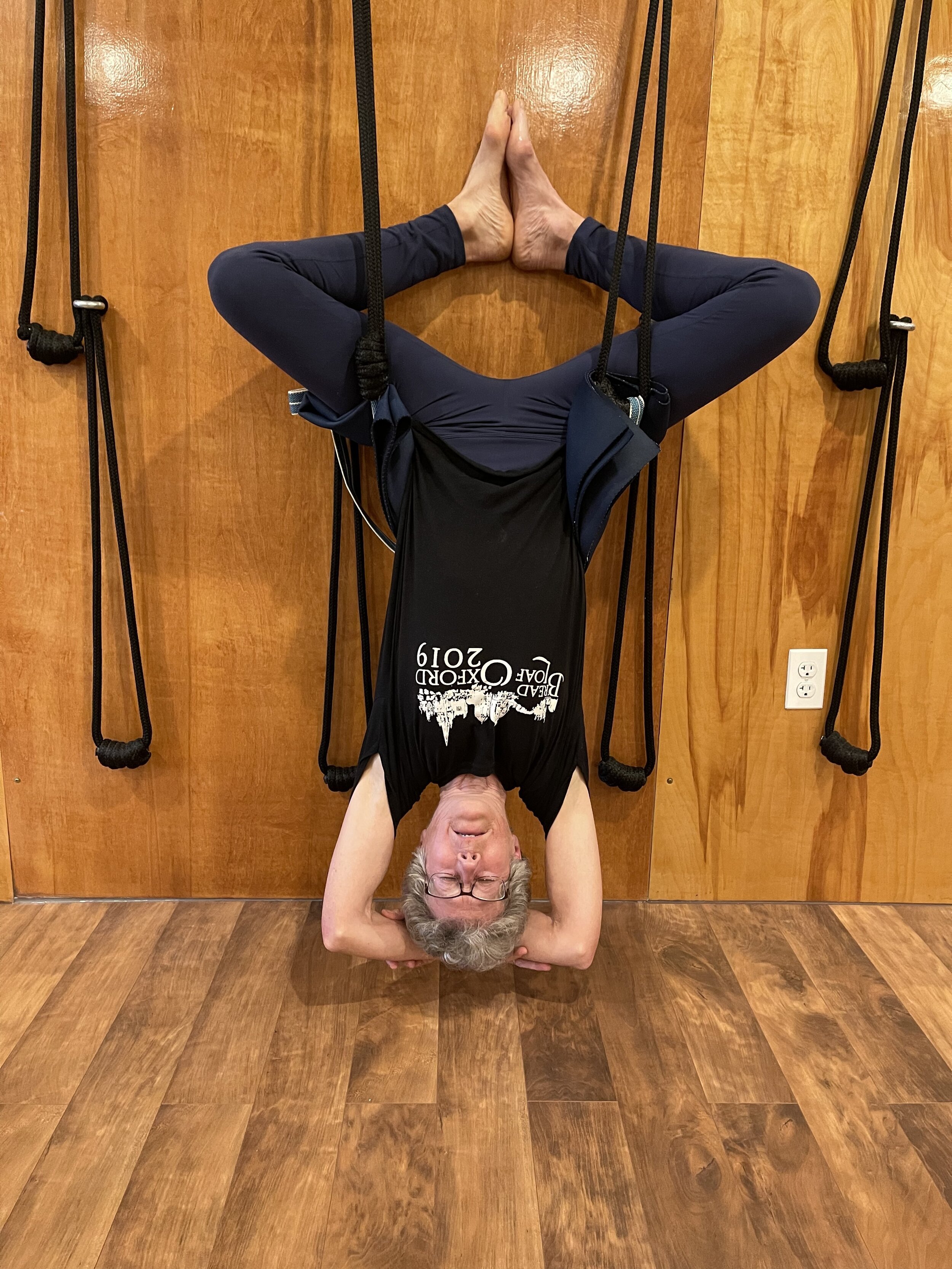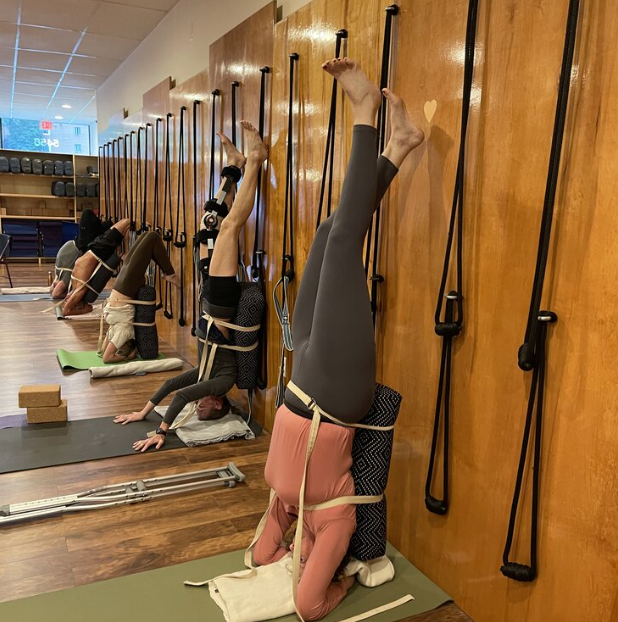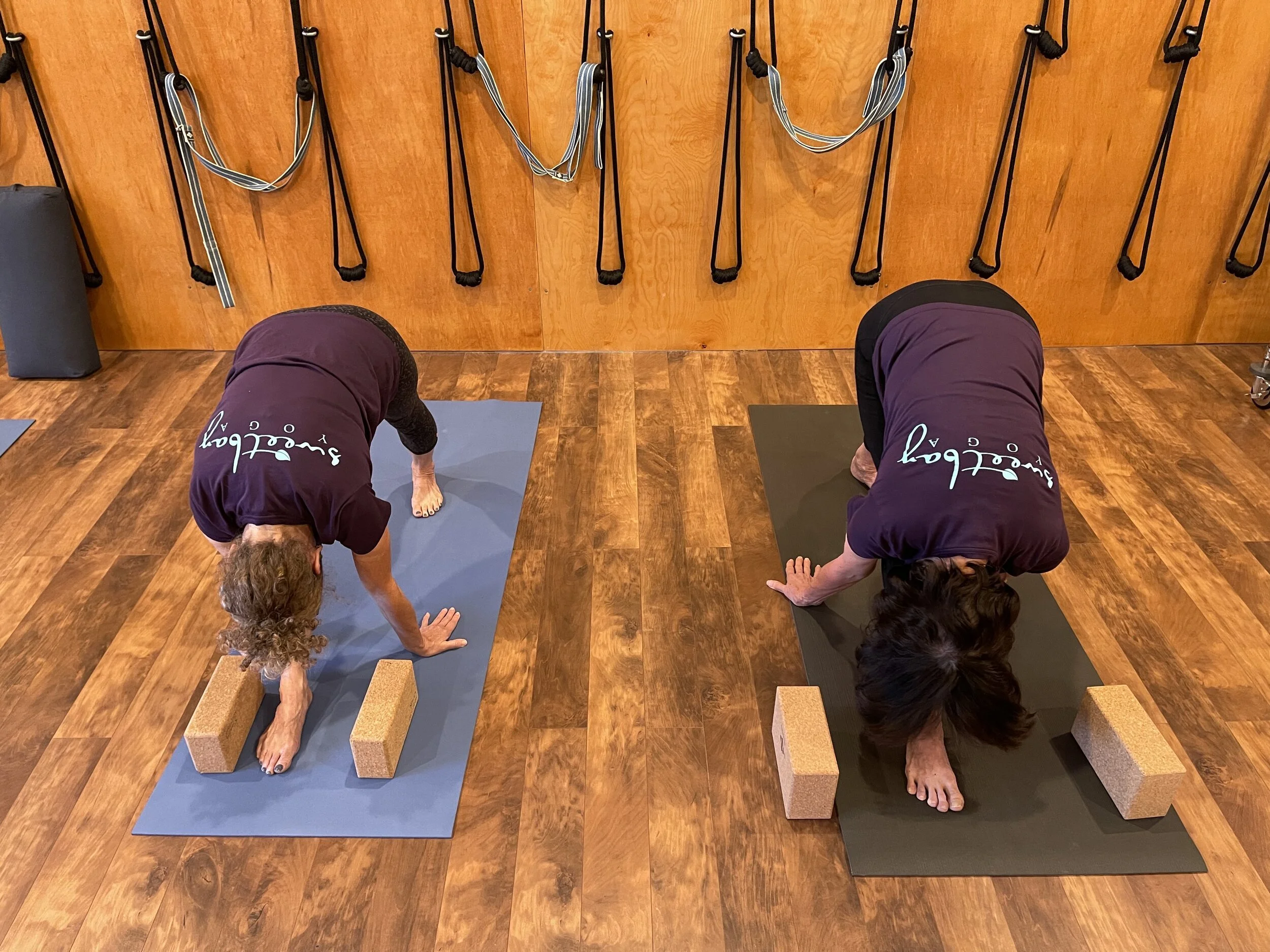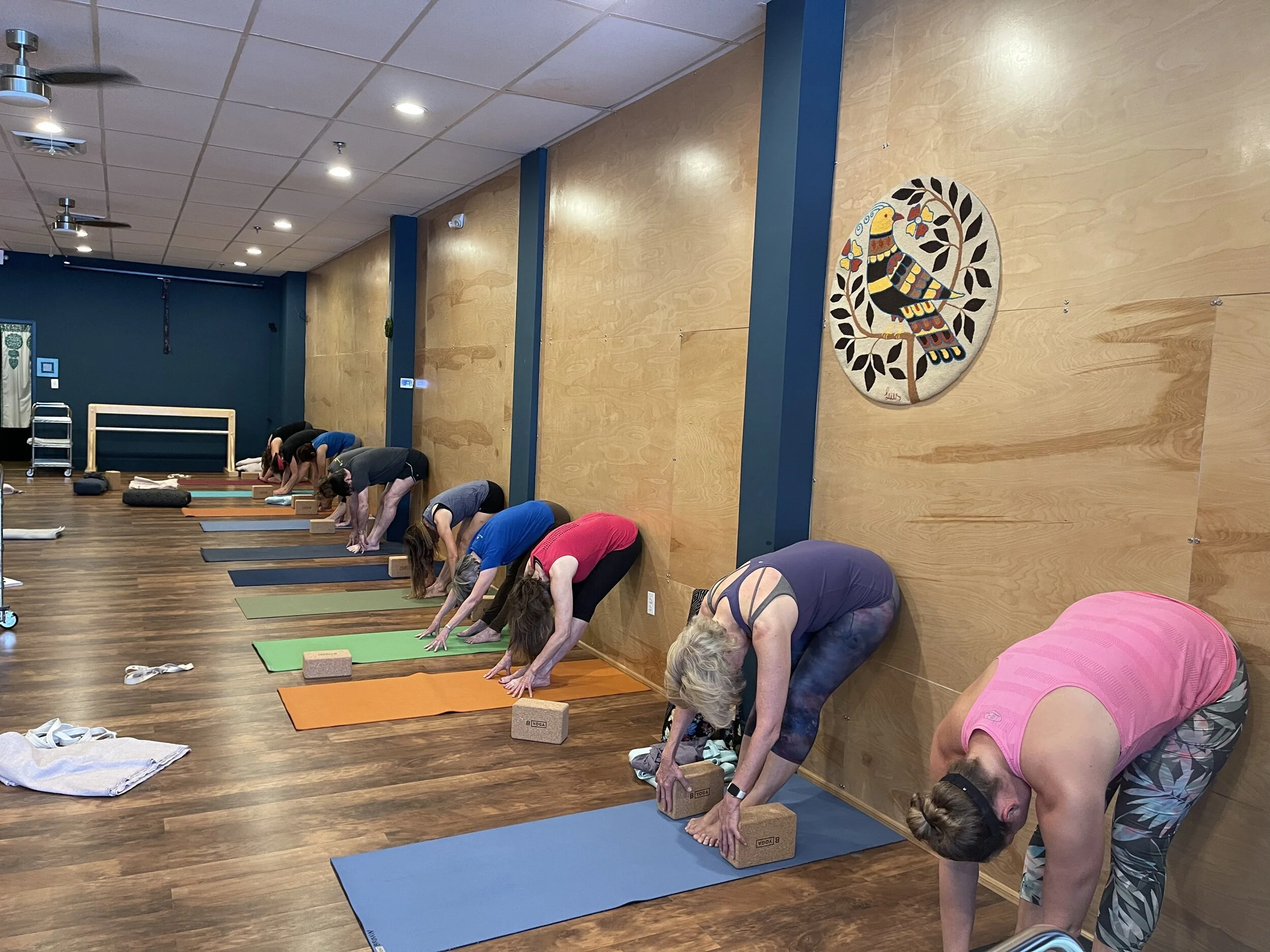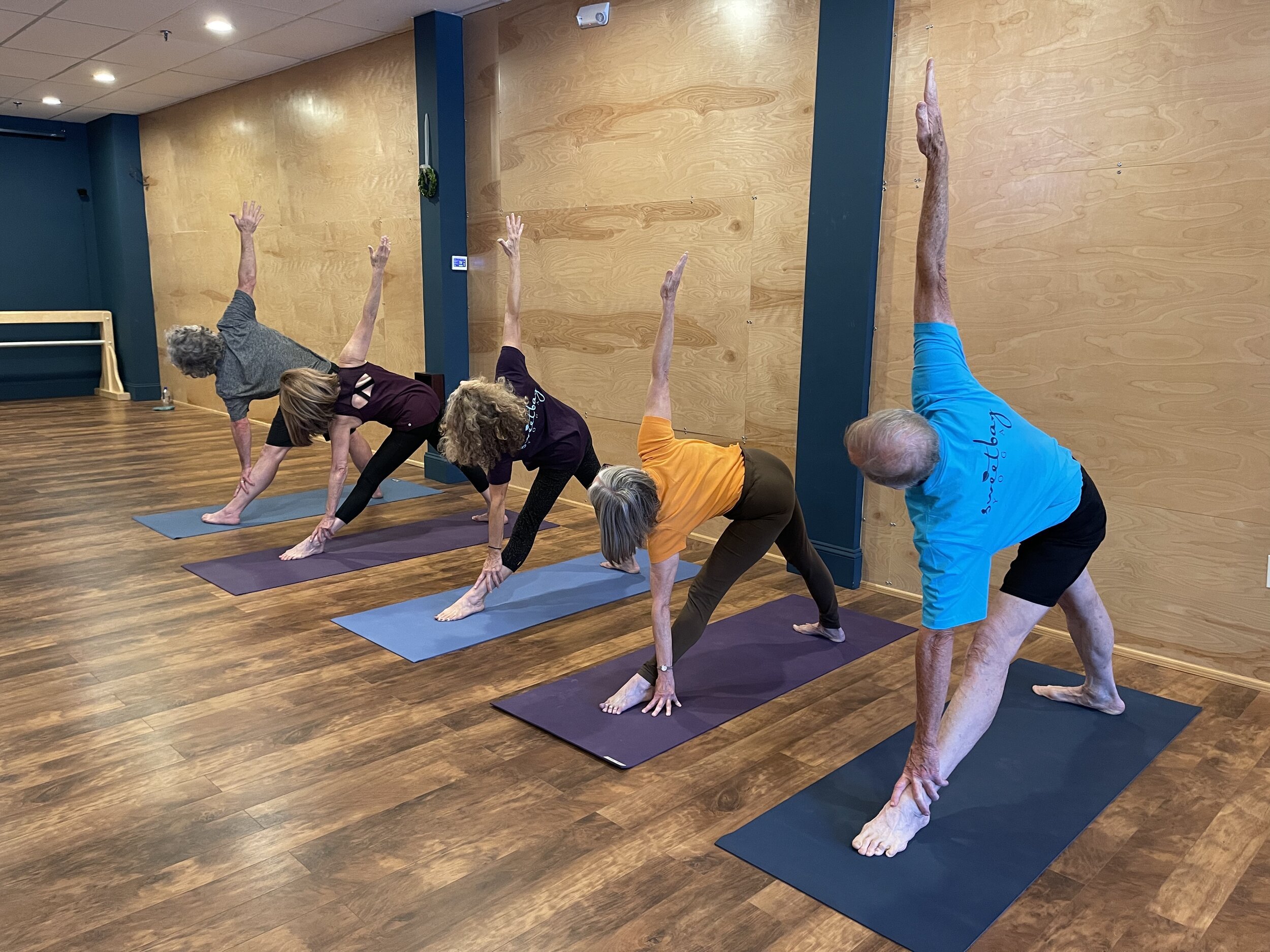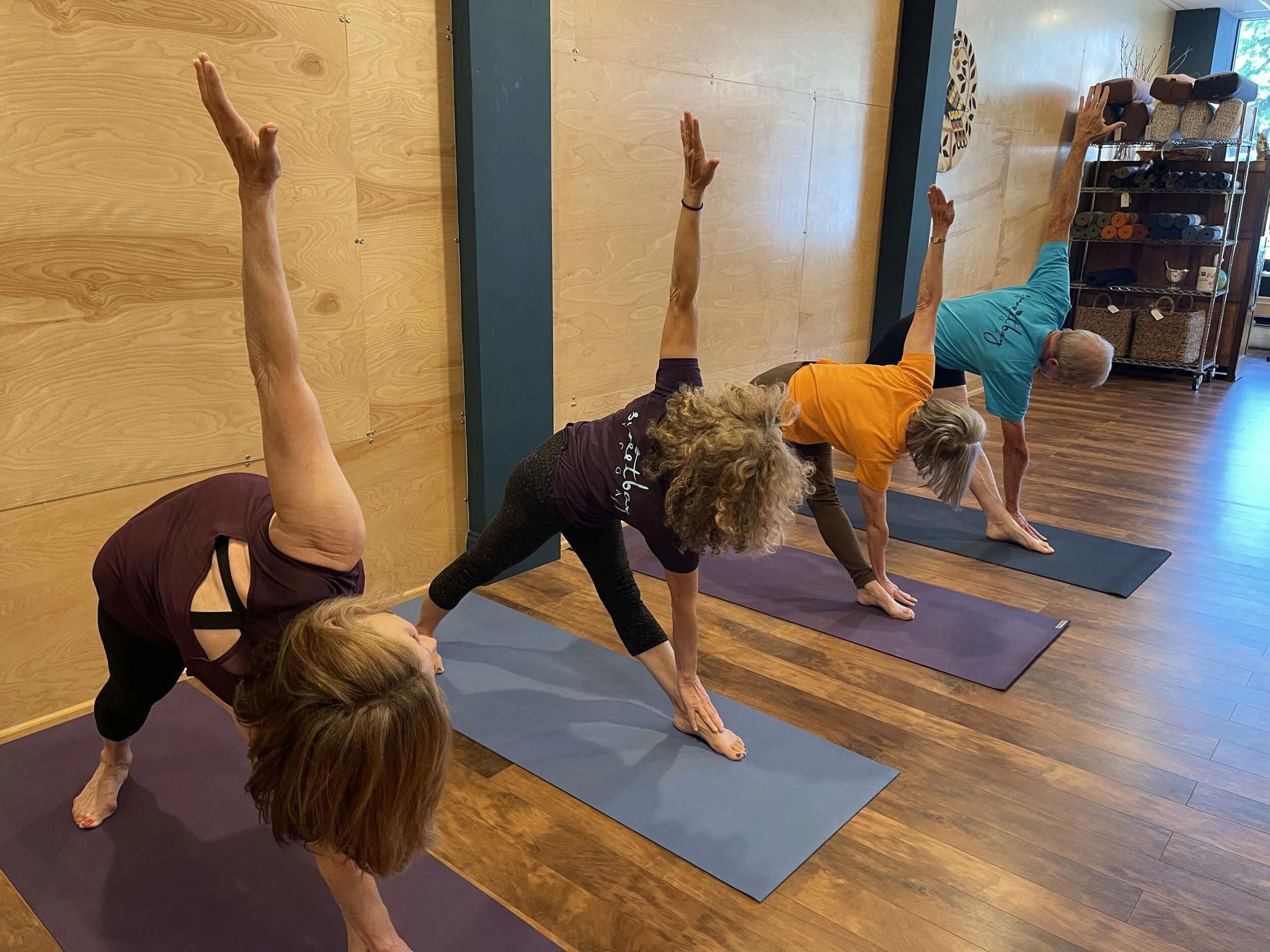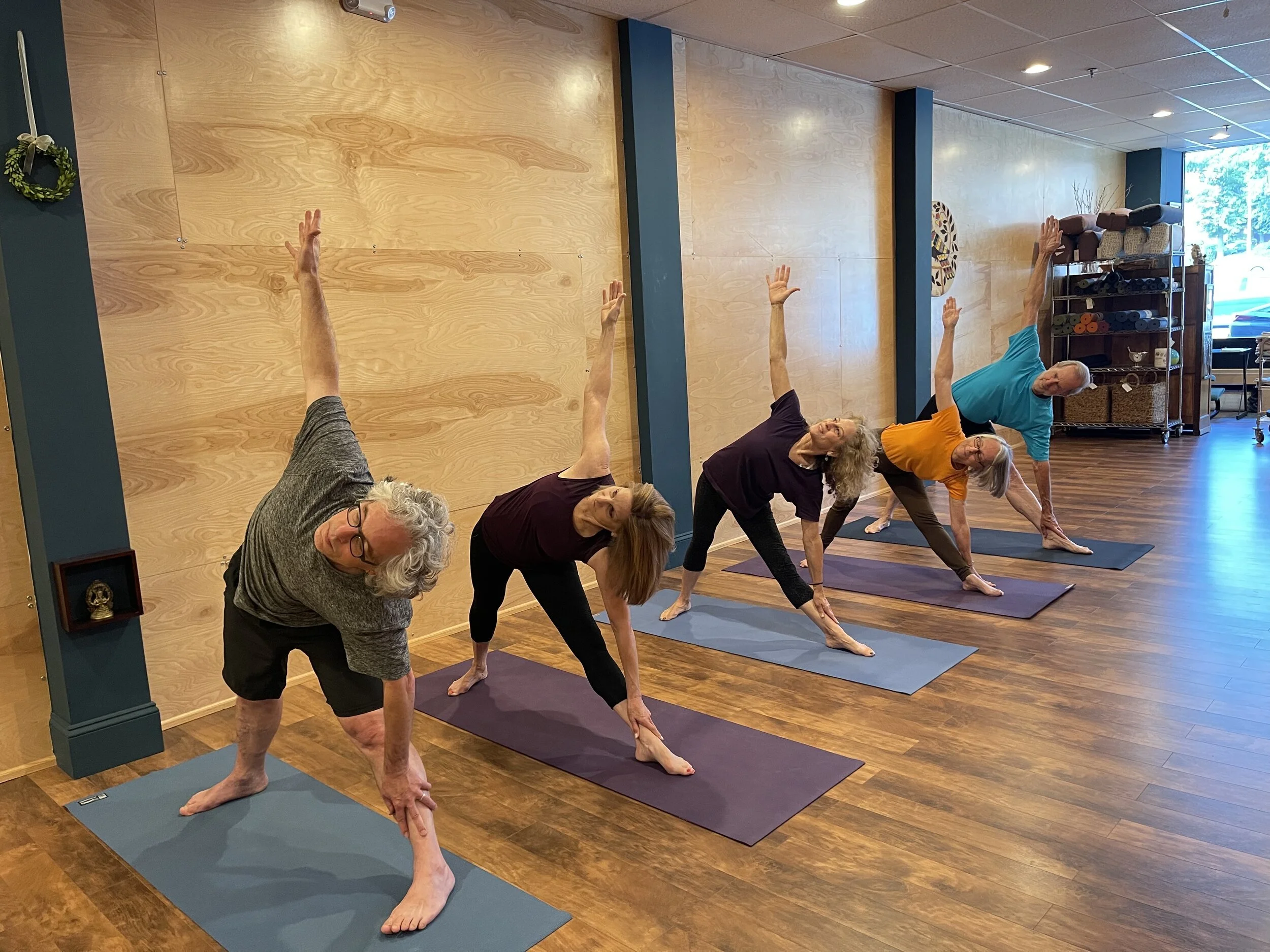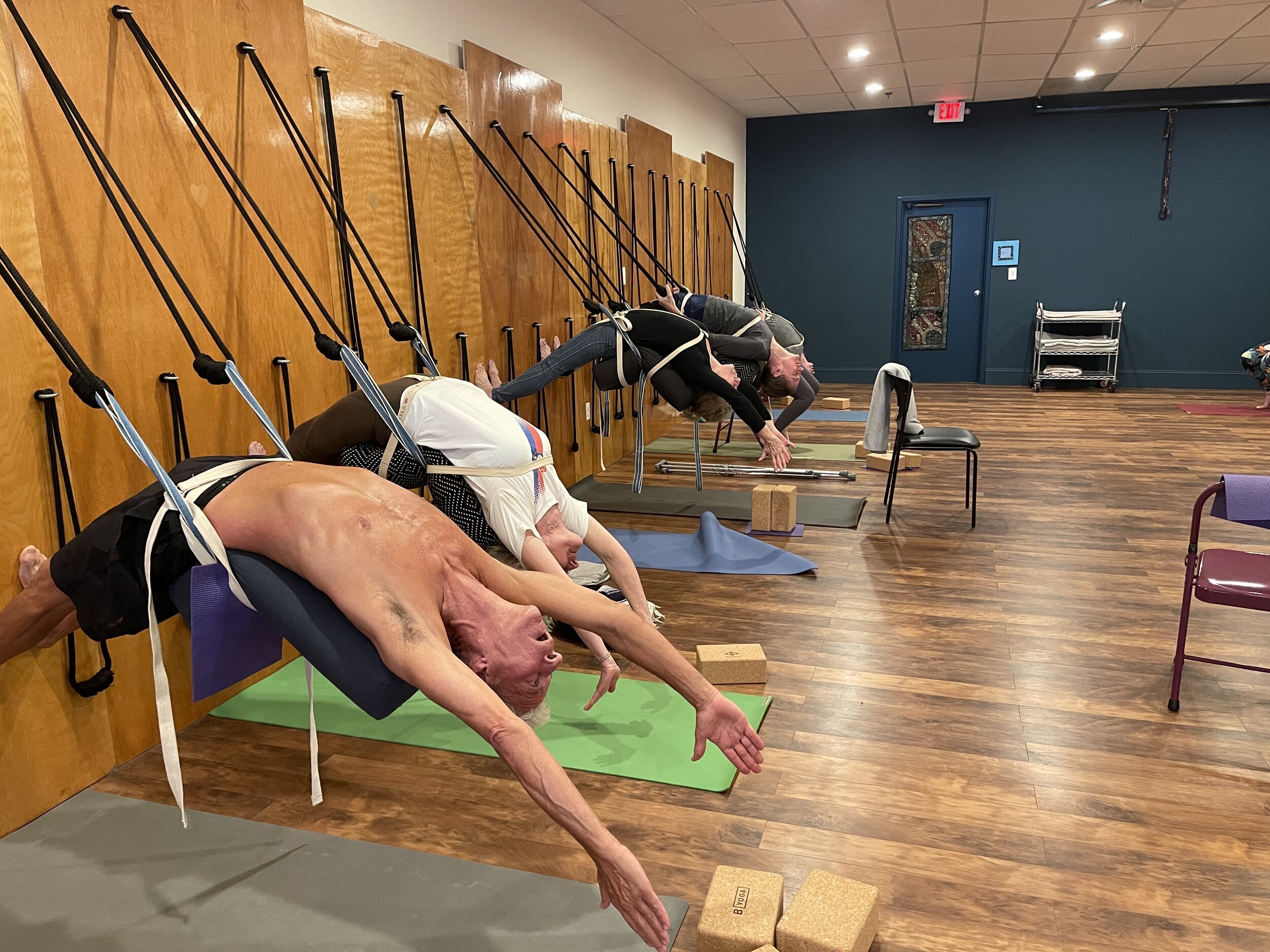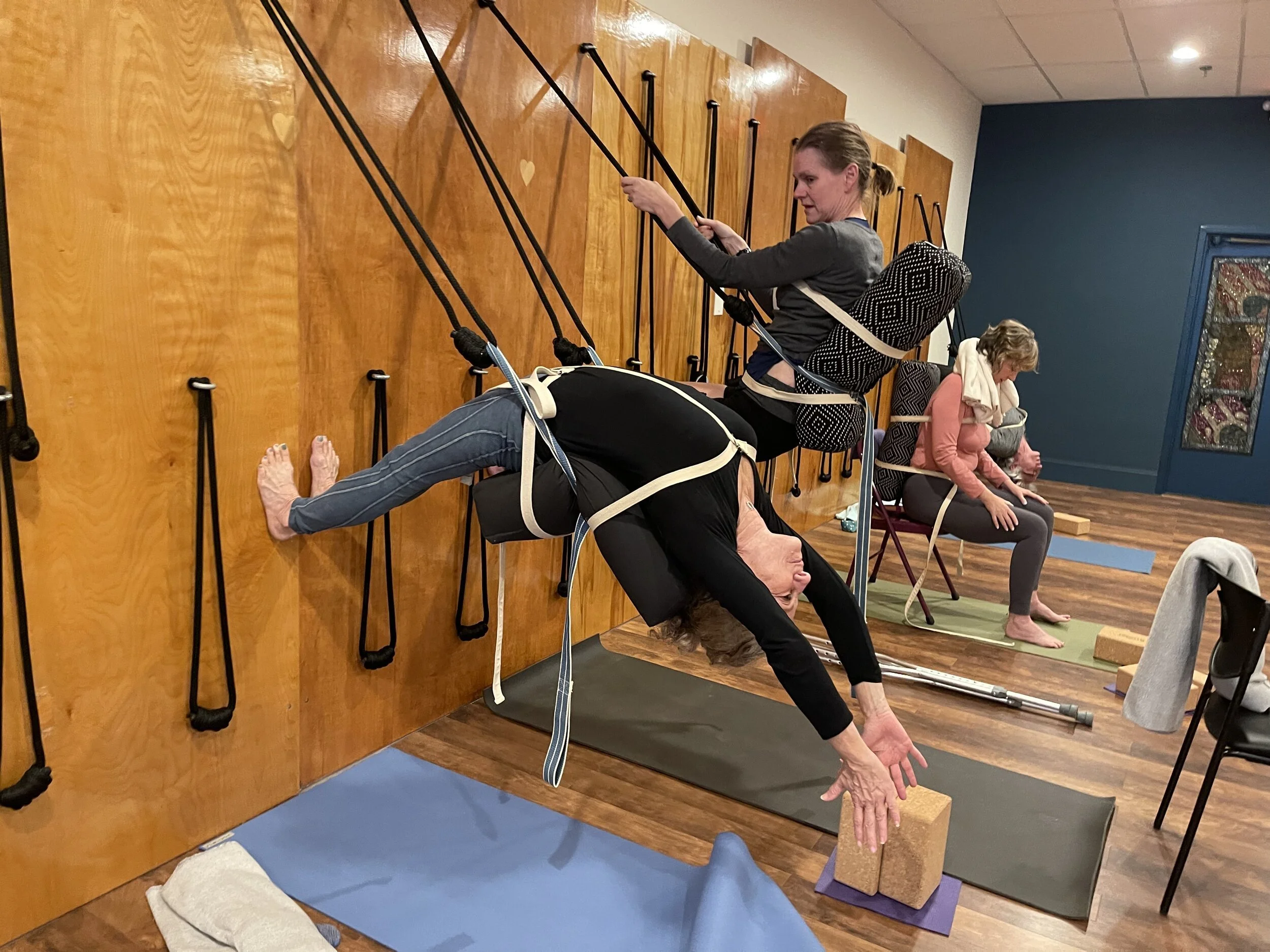Iyengar Yoga
Iyengar Yoga, developed by BKS Iyengar and his family in India, is an alignment-based practice that uses props to ensure students both get the full benefit of the asanas (poses) and also prevent injuries. Iyengar Yoga is accessible to all students, regardless of age and even many infirmities. Iyengar-trained teachers work with each student in a class to ensure that they are getting the deepest possible benefit from the pose, and to ensure that they will not accidentally injure themselves by doing a pose incorrectly. The teaching and sequencing is systematic and precise, helping students achieve incredible physical benefits, such as greater flexibility, strength, and stamina, as well as a focus and quiet in their practice.
Read below for more information on the types of poses you’ll be practicing.
Standing poses are where any yoga practice begins. They move us outward from our core to the periphery, and being upright allows us to have a clear sense of ourselves and the space around us. The external reference points are clear and familiar, as we spend so much of our lives upright, while our eyes are open. They are demanding. They build strength and stamina, and we very quickly receive their benefits, more so than other classes of postures. While they are the first poses you will learn, you will continue doing them at all levels and in all classes at Sweetbay Yoga. We laugh a lot and interact while doing them!
Standing Poses
Inversions
Inversions are an incredibly enriching part of any yoga practice. There are significant physical benefits: Improve your circulation, strengthen your immune system, increase your energy, and strengthen a range of muscles. But the benefits go even deeper. Inversions increase confidence, quiet the nervous system, and literally give us a new perspective. Come explore the inversions with us -- shoulderstand, handstand, headstand, and forearm balance—and learn how to do them safely, regardless of physical issues or limitations. Don’t be intimidated! There are many preparatory stages along the way, and you may decide not to go into the final pose for a long while, if ever. Not only do we say “Begin” where you are, but also “Be” where you are. Eyal Shifroni, a fabulous Iyengar yoga teacher from Israel, says: “Inversions are yoga’s greatest gift to humanity!”
Forward Folds
Forward bends allow the brain and heart to rest, by soothing the nerves and calming the mind. They help the digestive system and can support people who are suffering from high blood pressure, anxiety, headaches, insomnia, fatigue and weakness. In our classes, we practice forward bends carefully, not allowing the back body to overly round. Iyengar wrote about the importance of forward bends for heart health in this way: The human heart is positioned vertically and in front of the spine, whereas the heart in four-legged animals is horizontally below the spine. It’s the horizontal orientation that allows the heart to relax, closer to the earth. For this reason, forward folds have a positive effect on the heart and blood pressure.
Twists
When your twists improve, everything else improves along with it! Tension in the abdomen releases, and circulation is stimulated by twisting, The spine regains and maintains its full range of motion. The digestive organs are temporarily compressed, and when the twisting is released, they receive a fresh supply of blood flow. Twists are beneficial for maintaining and increasing bone density, as long as the spine remains straight, and not coerced into any extreme position. Abhijata Iyengar (BKS Iyengar’s granddaughter) said: Twists allow us to see the other side of every situation. Our practice on the mat informs the rest of our lives off the mat as well.
Backbends
Backbends are invigorating and strengthening. After sitting for hours and days and months in front of screens, they allow us to open the shoulders and chest. They uniquely build flexibility and, when done correctly, are so healthy for the back and the spine. Equally significant to the physical benefits of backbends are the mental and emotional benefits. Backbends are empowering. They build confidence as we reach back, where we cannot see. They improve our mood and open our hearts. Come join us as we explore backbends, safely and sequentially. Backbends require strength as well as mobility in shoulders and upper back, all of which will be incorporated into a backbend practice.

